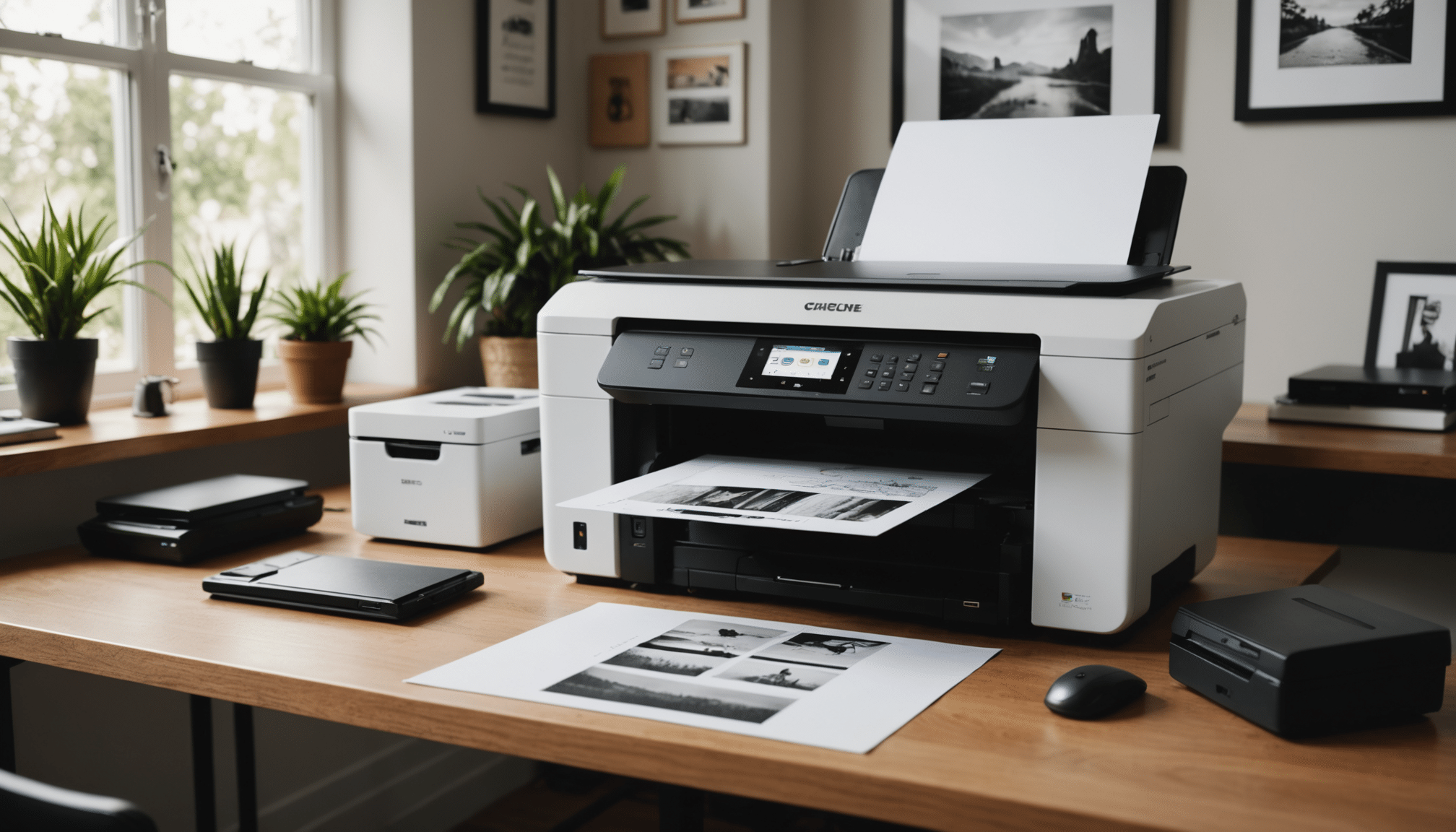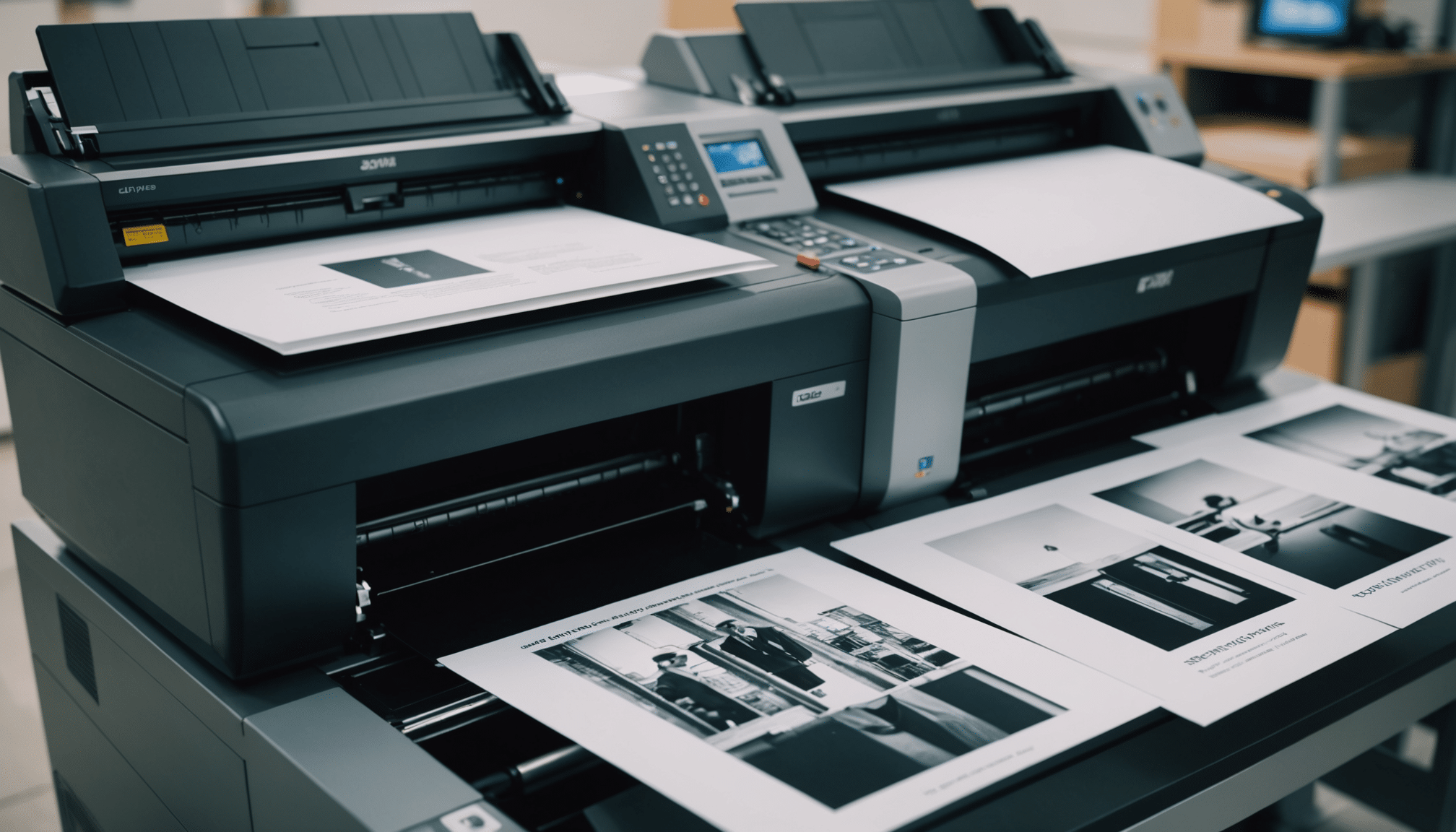
What’s the Difference Between Inkjet and Laser Printer?
Learn about the major differences between inkjet and laser printers now!
Last Updated on 10/09/2025
Choosing between an inkjet printer and a laser printer can be tricky if you’re unsure what sets them apart. This article explains the key differences, so you can decide which type of printer is best suited to your needs—whether it’s for home use, high-quality prints, or efficient document handling.
What’s the difference between inkjet and laser printers?
Inkjet printers use liquid ink and are best for high-quality colour images and photos. Laser printers use toner powder, print faster, and are more cost-efficient for high-volume text documents. Choose inkjet for visuals and laser for speed, durability, and lower cost per page on large print jobs.
Key Factors When Choosing a Printer
- Print volume matters—choose laser for frequent, high-page printing.
- Colour accuracy is stronger with inkjet printers, great for photos.
- Laser printers are faster and more efficient for office documents.
- Upfront cost is lower for inkjet, but running costs add up.
- Space and size differ—inkjets tend to be more compact.
- Consider cartridge lifespan: toner lasts longer than ink.
- Check for multi-function features like scan, copy or fax support.

Inkjet vs Laser: Key Differences
The difference between inkjet and laser printers starts with how they apply ink or toner onto the paper. Inkjet printers use liquid ink, sprayed through a nozzle in microscopic droplets. Laser printers, however, use toner—a dry powder—which is fused onto the paper with heat and electrostatics. It’s ink vs powder, and both have their place.
Inkjet printing shines in colour reproduction and detail. Inkjet printers are great for photographs, marketing materials, or any work that needs rich gradients and vibrant tones. Laser printers can print faster and more consistently when it comes to text documents. They’re the go-to for office paperwork, invoices, and bulk black-and-white printing.
Laser printers use toner cartridges that tend to last longer than an ink cartridge, and the cost per page is generally lower. On the flip side, inkjet cartridges can be pricier in the long run, especially if you print often. If you need to print occasionally and want great colour, go for inkjet. If you’re printing hundreds of pages per week, a laser printer may be the smarter choice. For an overview of reliable models, explore this range of printers for all uses.
Inkjet and Laser Printer Uses
Inkjet and laser printer uses vary depending on what you need to print. Inkjet printers are ideal for high-quality images, colourful school projects, or home photo albums. They perform best when printing on specialised inkjet paper and are often preferred by photographers and creatives for their accurate colour reproduction using the CMYK colour model.
Laser printers can print documents at a much faster rate—some reaching dozens of pages per minute. They are better suited to environments where speed and efficiency matter, such as a busy home office or small business. If you’re regularly printing long reports or invoices, laser printers can print sharper text and handle higher volumes with ease. Laser printers use toner that doesn’t smudge or bleed, making them a reliable workhorse.
It also comes down to budget and long-term usage. Inkjet printers tend to be cheaper upfront, but over time the ink cartridge replacements can increase the cost. A laser printer may cost more initially, but the toner cartridge generally lasts longer and prints more pages per refill. If you’re unsure which, think about what you print, how often, and in what quantity.
Quick Comparison of Key Printer Features
| Feature | Description | Importance |
|---|---|---|
| Printing Method | Inkjet printers spray liquid ink; laser printers use powdered toner fused with heat. | High |
| Print Quality | Inkjet printers offer superior colour and image detail; laser printers excel at sharp text. | High |
| Print Speed | Laser printers can print more pages per minute than inkjet printers. | High |
| Cost per Page | Laser printers are more cost-effective per page over time than inkjets. | High |
| Upfront Cost | Inkjet printers tend to be cheaper to buy than laser printers. | Medium |
| Cartridge Lifespan | Toner cartridges last longer than ink cartridges and need less frequent replacement. | Medium |
Different Printer Types for Specific Users
Not all printers fit every user, and this is where it helps to match the type of printer to specific needs. For students or occasional home users, an affordable inkjet printer will usually do the trick. It’s good for colourful school projects, occasional photos, and won’t take up too much desk space—perfect next to a laptop and pile of snacks.
If you work from home or run a small business, you might want something more robust. Laser printers can print large volumes, reduce costs per page, and offer reliable performance day after day. A monochrome laser printer, or even a multi-function printer with a scanner and fax feature, might be a better fit in that setting. They’re built to handle bulk printing and are usually Wi-Fi ready for easy sharing across devices.
For photographers or designers, the story changes again. Inkjet technology, especially those using pigment-based dye systems, is better suited for detailed photo reproduction. When paired with photographic paper, it can produce gallery-quality prints. Laser and inkjet printers both have a place—but knowing your usage helps you avoid mismatches. Start with your needs, then find the printer that ticks the right boxes.
Conclusion
Choosing between an inkjet printer and a laser printer comes down to what you need most—quality photo printing or fast document handling. Each type of printer has its strengths, whether it’s detailed colour or high-volume output at a lower cost per page.
At Viking, we combine our experience with a genuine passion for workplace solutions. Whether you’re setting up a home office or upgrading equipment for your team, we’re here to help you find the printer that’s better suited to your goals, budget, and productivity needs.
Frequently Asked Questions
Which type of printer is better for home use?
An inkjet printer is often better suited for home use, especially when you need to print photographs, colourful school projects, or occasional documents. Inkjet technology delivers strong image quality and handles a variety of paper types. However, if you print frequently, a compact laser printer may be more efficient and cost-effective per page.
Do laser printers cost more than inkjet printers?
Laser printers tend to have a higher upfront cost compared to inkjet printers. However, they are more economical in the long run, especially if you print large volumes. Laser printers use toner cartridges that last longer and have a lower cost per page, whereas ink cartridges need replacing more often and can drive up costs.
What is the difference between ink and toner?
Inkjet printers use liquid ink stored in ink cartridges, which is sprayed onto the paper using tiny nozzles. Laser printers use toner, a dry powder stored in a toner cartridge, which is fused onto the paper using heat and electrostatics. Both methods reproduce text and images but suit different usage patterns and print volumes.
Can I use inkjet paper in a laser printer?
No, it’s not recommended. Inkjet paper is coated to absorb liquid ink, whereas laser printers use heat to fuse toner powder onto the paper. Using inkjet paper in a laser printer may result in poor print quality or even damage the printer. Always check paper compatibility based on your printer type and function.









